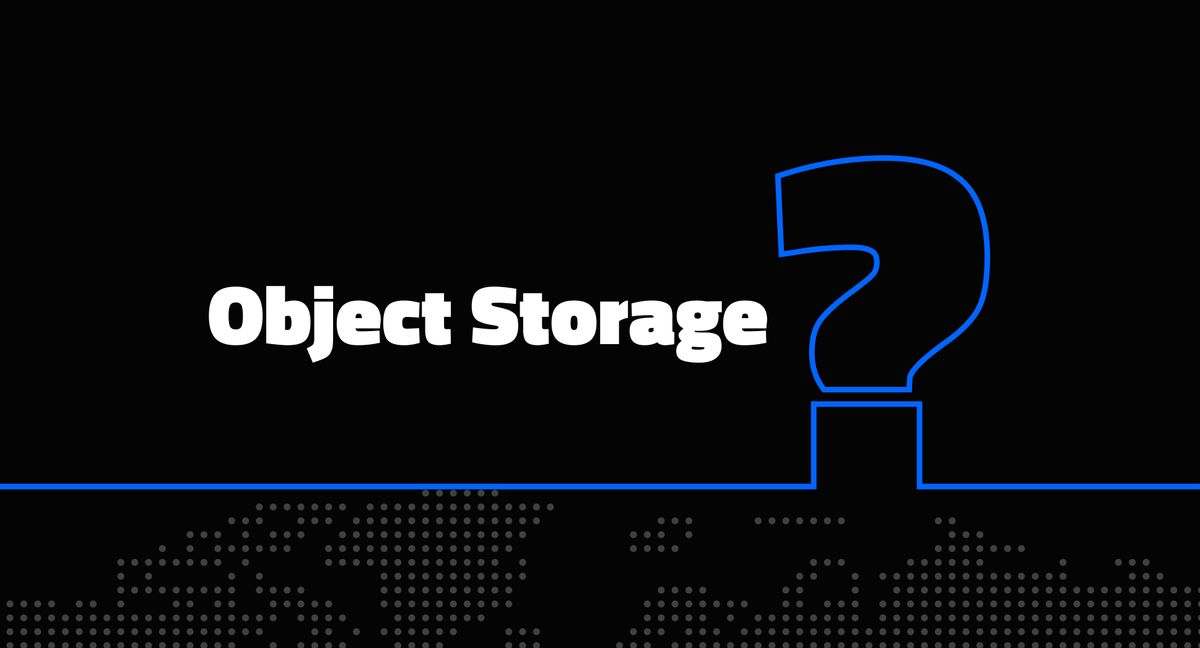Object storage is a type of storage system that is designed to store large amounts of unstructured data, such as media files, documents, and backups. Unlike traditional file storage systems, which use a hierarchical directory structure to organize files, object storage systems store data as "objects" that are assigned unique IDs. Object storage is often used for cloud storage and other applications that require high scalability and durability.
The origins of object storage can be traced back to the early days of the internet when the need for scalable and flexible storage solutions became apparent as the amount of digital data being generated and shared began to grow rapidly. First theorized in 1995, object storage was proposed in 1996 as a research project at Carnegie Mellon University. It was not until recently, however, that object storage began to gain widespread adoption, as advances in technology made it possible to build large-scale object storage systems that could handle the growing demands of big data.
Related reading: What is a hybrid cloud model? Examples and benefits in 2023
Today, object storage is a popular choice for businesses, organizations, and individuals who need to store and manage large amounts of unstructured data. It is often used in conjunction with cloud computing, as it provides the scalability and flexibility needed to support the dynamic nature of cloud environments.
In this article, you'll discover the main object storage use cases and advantages.
What are the advantages of Object Storage?
- Scalability: Object Storage can easily scale to accommodate large amounts of data without requiring complex configuration or expensive hardware upgrades.
- Durability: Object Storage is designed to provide high levels of data durability and prevent data loss due to hardware failures or other issues.
- Immutability: Object Storage, when supporting features like S3 Object Locking and Versioning, allows you to protect your data from ransomware.
- Flexibility: Object Storage allows for flexible data access and management, with different types of data stored in a single, unified system and accessed using a simple, web-based interface.
- Cost-efficiency: Object Storage is generally more cost-effective than other storage solutions, especially for storing large amounts of unstructured data.
- S3 Integration: S3 is the storage standard created by AWS. S3 compatible Object Storage can easily integrate with other systems and applications, enabling numerous use cases, seamless data access, and management across an organization.
Related reading: What is ransomware? 4 main types and a practical guide to restoring files encrypted by ransomware in 2023
What are the main object storage use cases?
- Data archiving and backup: Object Storage is often used for long-term data retention because it can scale to store large amounts of data and is highly durable. This makes it ideal for creating backups of important data.
- Media and entertainment: Object Storage is well-suited for storing and managing large collections of media files, such as videos and music. This is because it can handle large file sizes (together with 4K quality, as with Netflix) and high data transfer rates associated with media files.
- IoT and sensor data: Object Storage is often used to store and manage the vast amounts of data generated by the Internet of Things (IoT) devices and sensors. This is because it can handle the high volumes of data and the need for fast access to data that are common in IoT applications.
- Big data and analytics: Object Storage is well-suited for storing and managing large amounts of unstructured data that is used for big data and analytics applications. This is because it can scale to store large amounts of data and can provide fast access to data when it is needed for analysis.
Related reading: 6 backup strategy solutions for ransomware data recovery in 2023
Why choose Cubbit's geo-distributed Object Storage
One of the reasons to choose Cubbit's Object Storage is its compatibility with the Amazon S3 API. This means that developers can easily integrate Cubbit's Object Storage into their existing applications without requiring significant changes to their code. In addition, Cubbit's Object Storage is highly secure and reliable. All data is encrypted with AES-256, split into pieces, and geo-distributed in multiple copies in a p2p network under the user’s control.
Overall, Object Storage use cases provide a flexible and scalable solution for storing large amounts of unstructured data. With its compatibility with the Amazon S3 API, Cubbit's Object Storage is an ideal choice for developers looking to integrate Object Storage into their applications.
Want to see Cubbt in action? Look at our latest demo >








